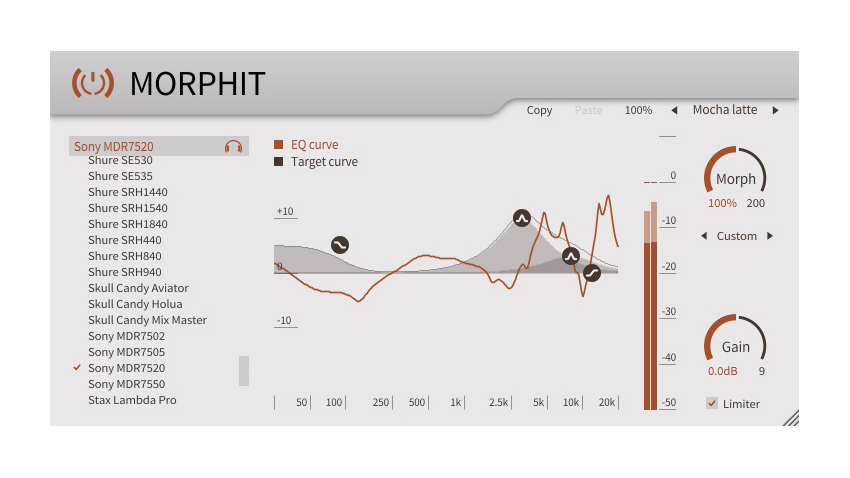Morphit promises to upgrade your headphones or make them sound like a different pair
Hear how your mixes translate

While many would advise against mixing your music using studio headphones, it's not an uncommon practise. That's why Toneboosters has introduced Morphit, a new plugin that promises not only to make your headphones sound better, but also to emulate the experience of listening to other cans.
Morphit has three modes of operation, starting with Correct. Here, the idea is that the response of your selected pair of headphones is corrected and improved (a wide range of models is covered in a list of presets), with the specifics of the correction being illustrated on a graph in the user interface.
Using Simulate mode, meanwhile, you can emulate the response of a different pair of headphones on your own cans, giving you a better idea of how your mix will translate. Hi-fi, studio reference and even in-ear headphones can be emulated, and if you can't find the model you're looking for on the list, you can choose from various 'generic' options.
Custom mode is an extension of Simulate mode, and features an EQ that enables you to adjust the sound manually. Morphit also features a peak limiter so that it can be inserted on a master bus without any clipping issues.
Morphit is available for PC and Mac in VST/AU formats, and costs €30. Check out the Toneboosters website for further details (including a full list of supported/emulated headphones) and to download a demo.
Get the MusicRadar Newsletter
Want all the hottest music and gear news, reviews, deals, features and more, direct to your inbox? Sign up here.



I’m the Deputy Editor of MusicRadar, having worked on the site since its launch in 2007. I previously spent eight years working on our sister magazine, Computer Music. I’ve been playing the piano, gigging in bands and failing to finish tracks at home for more than 30 years, 24 of which I’ve also spent writing about music and the ever-changing technology used to make it.









